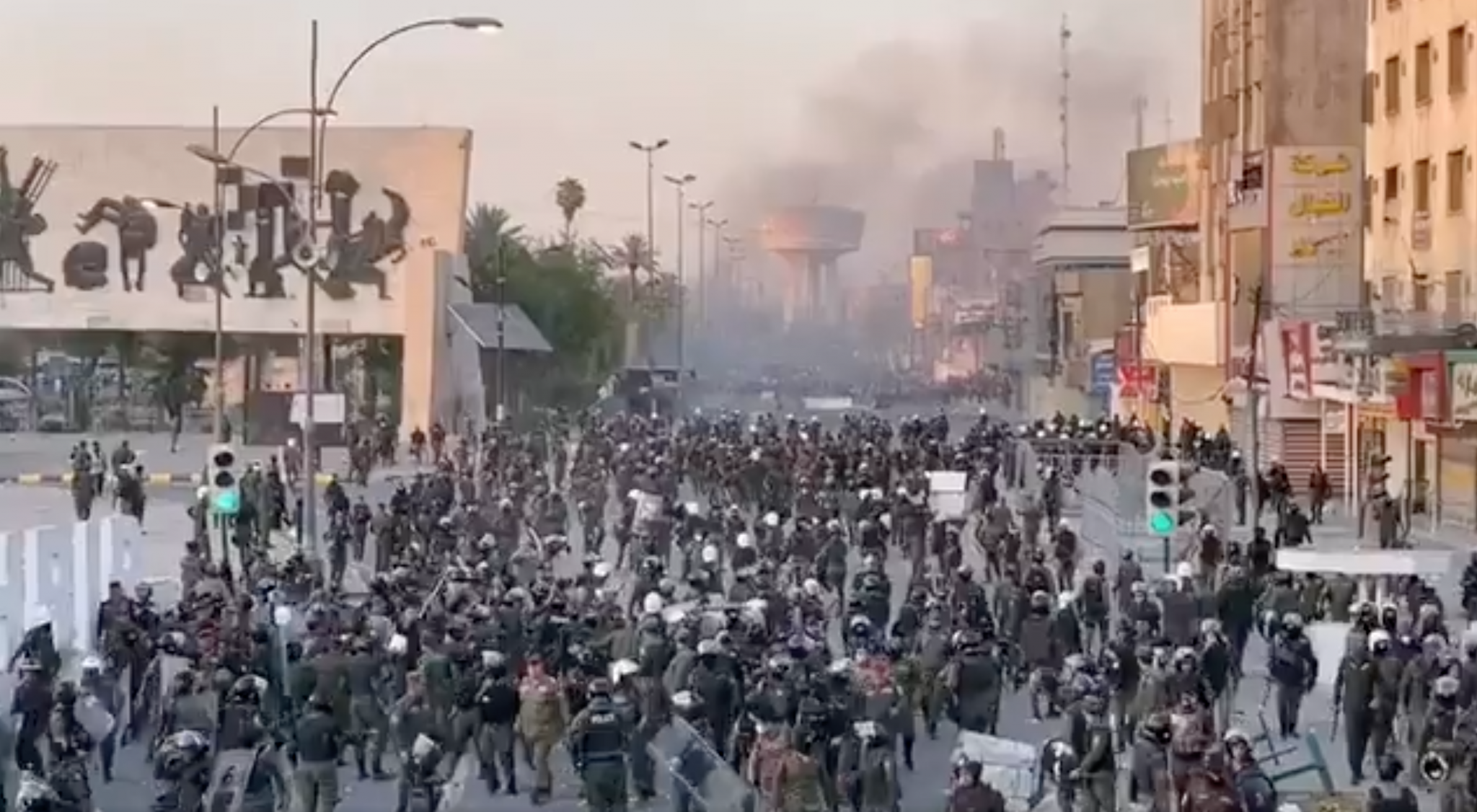
One protester was killed and dozens injured as security forces opened fire on a May 25 rally in Baghdad, where thousands had gathered to demand accountability in the murder of Iraqi activists and demonstrators. Video footage on social media showed live fire, tear-gas and street-fighting reminiscent of October 2019, when the nationwide uprising first broke out. Since then, almost 600 protesters have been killed and at least 30 activists slain in targeted killings, according to the Iraqi High Commission for Human Rights. The new protests were sparked by the killing of activist Ihab Jawad al-Wazni near his home in Karbala on May 9, and calls by his family for an end to impunity. (Al Jazeera, Al Jazeera, Middle East Eye)
The US State Department responded to the repression in Baghdad with a statement expressing outrage at the “brutal violence.” The US has placed sanctions on militias held responsible for internal repression in Iraq before, but one senses the real issue for Washington is Tehran’s role in backing this paramilitary apparatus. Al-Wazni was apparently killed by one of the Iran-backed militias that have served as an auxiliary paramilitary force of the Baghdad government—first to fight ISIS, and more recently to repress protests.
The day after the violence in Baghdad, security forces arrested Qasim Muslih, a senior militia commander, in connection with rocket attacks on Ayn al-Asad base that houses US troops. Interior Ministry troops intercepted a convoy of Muslih’s al-Tawaf Brigade on the outskirts of Baghdad and carried out the arrest. The Tawaf Brigade is a branch of the paramilitary Popular Mobilization Forces based in Anbar province. One of the main militias in the network, the Hezbollah Brigades, responded to the arrest by calling it a kidnapping and saying it would not be tolerated. Within hours, militia fighters took over one of the entrances to Baghdad’s high-security Green Zone, where the US Embassy and many Iraqi government offices are based. A tense stand-off with the official security forces ensued. (NYT, The Hill, Al Jazeera)
Photo via Twitter





Iran-backed militias reject Iraq election results
Followers of Muqtada al-Sadr, the Shiite cleric whose fighters battled US forces during the occupation, made the biggest gains in Iraq’s Oct. 10 parliamentary election, strengthening his hand in determining whether the country drifts further out of Washington’s orbit—and Tehran’s. Losses were booked by pro-Iranian parties with links to the armed groups that make up the paramilitary network known as Hashd al-Shaabi, or Popular Mobilization Forces (PMF). The PMF is rejecting the election results as “manipulation” and a “scam.” (NYT, Al Jazeera)
Protesters storm Iraqi parliament in Baghdad
Thousands of followers of Muqtada al-Sadr breached Iraq’s parliament on July 30, for the second time in a week week, protesting government formation efforts led by his rivals, an alliance of Iran-backed groups. The alliance has called for counter-protests, raising the specter of civil strife. (AP)
Protesters storm presidential palace in Baghdad
At least 15 people were killed and more than 300 were wounded Aug. 29 in clashes between supporters of Muqtada al-Sadr and those of his political rivals in Baghdad and other cities. The government imposed a curfew after Sadrists stormed the Green Zone and presidential palace. For his part, al-Sadr has announced an open-ended hunger strike until the violence stops, and says he is retiring from politics. (IraqiNews, OilPrice)